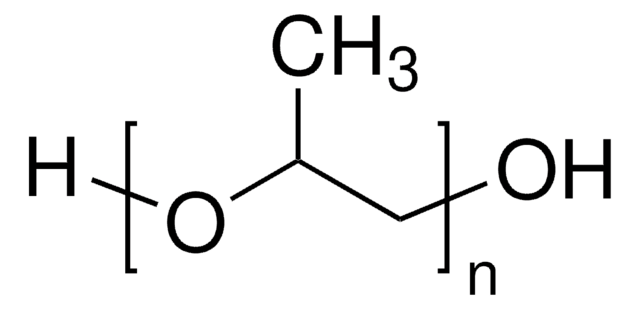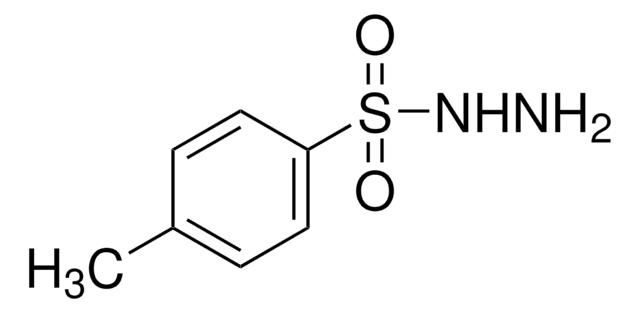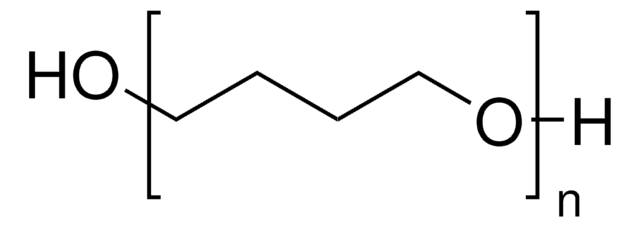202355
Poly(propylene glycol)
average Mn ~4,000
Sinónimos:
PPG, Poly(propylene oxide)
About This Item
Productos recomendados
densidad de vapor
>1 (vs air)
presión de vapor
<0.01 mmHg ( 20 °C)
descripción
functionality 1.7
mol peso
average Mn ~4,000
impurezas
≤0.035% Water (Karl Fischer)
viscosidad
1,300 cP(25 °C)(lit.)
valor hidroxilo
28 mg KOH/g
solubilidad
H2O: <0.01 % (w/w) at 25 °C
densidad
1.004 g/mL at 25 °C
cadena SMILES
CC(O)CO
InChI
1S/C6H14O3/c1-5(8)4-9-6(2)3-7/h5-8H,3-4H2,1-2H3
Clave InChI
DUFKCOQISQKSAV-UHFFFAOYSA-N
¿Está buscando productos similares? Visita Guía de comparación de productos
Categorías relacionadas
Descripción general
Aplicación
- As a precursor to synthesize biodegradable poly(ether-ester) networks via UV photopolymerization.
- As a stabilizing agent in the preparation of metal nanoparticles such as gold nanoparticles.
- As a starting material to prepare silane-terminatedpoly(urethane-urea)s (SPUR) polymers.
Código de clase de almacenamiento
10 - Combustible liquids
Clase de riesgo para el agua (WGK)
WGK 1
Punto de inflamabilidad (°F)
445.0 °F - closed cup
Punto de inflamabilidad (°C)
229.44 °C - closed cup
Equipo de protección personal
Eyeshields, Gloves
Elija entre una de las versiones más recientes:
¿Ya tiene este producto?
Encuentre la documentación para los productos que ha comprado recientemente en la Biblioteca de documentos.
Los clientes también vieron
Artículos
A Review of Mesoporous TiO2 Thin Films
Nuestro equipo de científicos tiene experiencia en todas las áreas de investigación: Ciencias de la vida, Ciencia de los materiales, Síntesis química, Cromatografía, Analítica y muchas otras.
Póngase en contacto con el Servicio técnico






